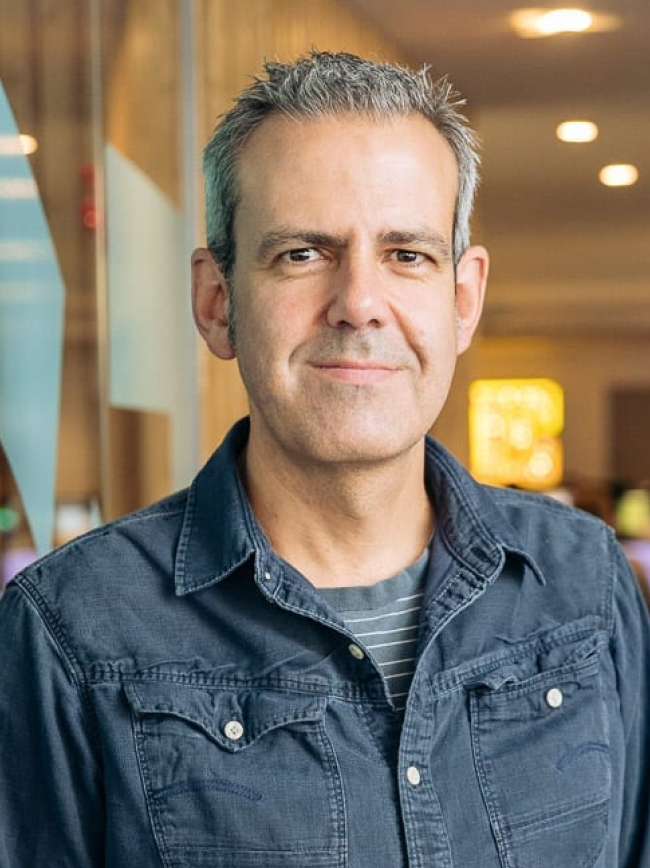The must-read research that can make or break your B2B marketing

These past 12 months, we’ve been blessed with an ‘M20 truck stack’ of new research into the field of B2B.
• • •
(Header photo: JOYUMA on Unsplash)
This post originally appeared on LinkedIn Pulse
• • •
(Header photo: JOYUMA on Unsplash)
The LinkedIn B2B Institute, Ehrenberg-Bass Institute, and WARC, among other parties, have played a blinder with illuminating report after report.
Talking regularly to clients, industry folk and other like-minded B2B ne’er do wells, it’s apparent a fair few people are yet to stumble upon these new insights so I thought I’d try to do the honourable thing for a change and spread the word.
Here goes…
1. The secret is out: there is a winning formula for more effective B2B marketing
Invest 54% of your budget in sales activation and 46% in long-term brand building, according to Binet & Field.
So if this is true (and they have lots of data to back it up), you can see where most B2Bers are going wrong already. They’re directing the vast majority of their time, efforts and attention to short-term demand-gen, rather than building their brand.
2. Investment in brand building matters – otherwise the odds are stacked against you
Typically 95% of B2B customers are not in market for your products/services at any one time says the Ehrenberg-Bass Institute for Marketing Science.
All that demand-gen activity is only hitting the 5% of buyers actively in-market – and it’s way too dependent on good luck and the fortune of being in the right place at the right time. A degree of intent data may help but if your brand isn’t familiar or considered, best of luck to you. To grow, B2B brands need to be engaging the 95% too (their future buyers) so they become the go-to when potential customers do enter the market.
3. If you want to grow your brand, it’s all about having the mental advantage
According to Prof. Byron Sharp (aka. Mark Ritson’s Dark Lord of Penetration?!), success is primarily about ‘mental availability’ and ‘physical availability’.
Mental availability is the really interesting one for me – whether your brand is thought of first and noticed in relevant buying situations. It’s not so much about, what customers think of your brand, but when they think of your brand.
Physical availability then matters in terms of your brand being easy to buy from – not just IRL but potentially online. Make it frictionless.
4. Want to make your brand more memorable? Use the power of emotion
According to the B2B Effectiveness Ladder – and the work of those chaps Binet & Field, brands have more impact when they employ more emotional advertising.
For advertising, I read marketing, but what’s important is that long-term brand building is more effective when it draws on big, human ideas to really engage the emotions. C.f. Volvo Trucks, Van Damme splits, yadder yadder. But you knew that, didn’t you?
5. Really want to ensure success? Associate your brand with the moments that matter
As Prof. Jenni Romaniuk, at Ehrenberg-Bass says, think about the Category Entry Points. Because the more you’re thought of by more customers, in more buying situations, the more likely you are to grow.
Jenni has created a really helpful model featuring a set of ‘w’s you can consider when mapping out the CEPs for your brand and given guidelines on how to prioritise them. A stellar bit of planning work and something every B2B marketer should be thinking about.
6. Trying to assess your brand health? Consider Share of Search
Binet and his research shows that a brand’s organic share of search can in fact be a predictor of market share. When share of search for a brand increases, so too does market share and vice versa (not necessarily immediately – as it can happen 12 months later depending on the category).
This makes sense if you buy the fact that your brand’s mental and physical availability matters. Your brand springs to mind, they search, they like, they end up buying. It won’t be a perfect indicator for all brands and all categories but one definitely worth exploring as a predictor of future growth.
7. Want to create high-performance B2B marketing? Go big, bold, and long
That’s according to the B2B Institute & WARC’s B2B Effectiveness ladder. The key to B2B marketing effectiveness – in simple terms – is to go bigger, go bolder, and go for longer. No innuendo intended.
Essentially, their analysis of 435 B2B case studies from WARC’s effectiveness database (2010-21) showed that to deliver more effective campaigns you should:
- Go for a higher spend, spread out across more media to support broader targeting
- Commit to using big, creative ideas and platforms that drive emotional engagement – and stick with them
- Invest in long-term campaigning rather than lots of smaller tactical bets
I can’t understate how good the B2B Effectiveness Ladder Code report is. Kudos to the guys who created it.
In conclusion:
You may not agree with all the research. Worst case, you’ll find it’s thought-provoking. Best case, it’ll provide you with a set of really useful data, insights, and frameworks to plug into your B2B marketing activity. Anyway, I hope you find it as useful as I have.
The all-important links:
- LinkedIn B2B Institute: What. A. Library. All B2B is here
- Ehrenberg-Bass research on How B2B Brands Grow
- Prof. Jenni Romaniuk’s great work on Category Entry Points
- Les Binet’s work on Share of Search
- B2B Effectiveness Code – the ladder in all its glory
Bonus material:
Hate reading, like listening? Here are a few good podcast recommendations for the queue outside the airport/pina colada on the sunbed that touches on some of the above.
Uncensored CMO, hosted by Jon Evans, and always good value. Check out this episode, in particular, featuring Jon Lombardo and Peter Weinberg, from the LinkedIn B2B Institute:
Uncensored CMO interview with Prof. Byron Sharp at Ehrenberg-Bass on How Brands Grow:
On Strategy Showcase hosted by Fergus Walsh (what a voice). Another interview with Jon Lombardo on what they’re doing to help B2B marketers gain the support of their CFO:
This post originally appeared on LinkedIn Pulse
• • •

